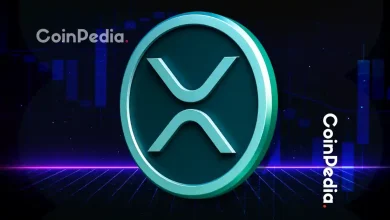
CZ proposes a dark pool DEX to shield large trades from front-running and MEV attacks.
The idea follows a $100M liquidation incident on Hyperliquid tied to alleged manipulation.
Experts say privacy-focused DEXs need advanced tech like zk-proofs and risk detection tools.
In a move that’s already sparking serious debate across Crypto Twitter, Binance co-founder Changpeng “CZ” Zhao has proposed an innovative solution to a lingering problem in decentralized finance: the vulnerability of large trades on transparent DEXs.
His idea? A dark pool perpetual swap DEX designed to protect whales from front-running, MEV bot attacks, and liquidation hunting.
If it sounds intriguing, that’s because it is. Read on to know more.
The Problem with Transparent DEXs
Zhao’s proposal addresses a significant flaw in current decentralized exchanges (DEXs): the visibility of orders in real time.
“If you’re looking to purchase $1 billion worth of a coin, you wouldn’t want others to notice until it’s completed,” Zhao stated in his X post.
This issue becomes even more problematic on perpetual DEXs where liquidation levels are visible. Bad actors can coordinate attacks that push prices toward these thresholds, triggering mass liquidations.
Case in Point: The $100M Liquidation on Hyperliquid
CZ’s remarks came shortly after a dramatic incident involving trader James Wynn, who reportedly held nearly $100 million in long BTC positions on Hyperliquid. When Bitcoin briefly dropped below $105,000, Wynn’s positions were liquidated – prompting widespread speculation that it was a coordinated “liquidation hunt.”
Rumors swirled on X that Tron’s Justin Sun had shown interest in the group allegedly behind the event, and that Eric Trump – yes, the son of U.S. President Donald Trump – had even been invited. While none of these claims are confirmed, the chatter underscores how exposed large traders are in today’s transparent DeFi markets.
Dark Pools: A TradFi Solution for DeFi
Dark pools aren’t new – they’ve long existed in traditional finance (TradFi) as private venues where large trades happen away from public order books. As CZ pointed out, these pools are often “10 times bigger” than transparent ones, shielding traders from front-running, slippage, and unnecessary market impact.
Translating that model to DeFi, however, is no small feat.
According to StealthEX CEO Maria Carola, “the fundamental challenge in building a dark pool-style perp DEX is achieving both privacy and verifiability.” She suggested technologies like zk-SNARKs or zk-STARKs could make this possible, allowing trades to be validated without revealing sensitive details.
Balancing Privacy and Security in DeFi
Still, Carola cautioned that “opacity is a double-edged sword.” While it reduces front-running risks, it can also obscure manipulative behavior, especially in leveraged environments like perpetual swaps.
To offset this, she recommended integrating adaptive risk engines and behavioral anomaly detection, ideally with cryptographic accountability baked in. In short, if we’re going to hide trades, we’d better watch the system closely.
So… Is a Dark Pool DEX the Future?
CZ isn’t claiming his idea is perfect. In fact, he acknowledged that transparency can help market makers absorb large orders, making some forms of openness valuable.
What he is doing, however, is pushing the space to evolve.
He encouraged developers to explore on-chain dark pool designs, whether by hiding the order book or delaying visibility of smart contract deposits, to build a more balanced, secure environment for institutional-scale traders.
Trust with CoinPedia:
CoinPedia has been delivering accurate and timely cryptocurrency and blockchain updates since 2017. All content is created by our expert panel of analysts and journalists, following strict Editorial Guidelines based on E-E-A-T (Experience, Expertise, Authoritativeness, Trustworthiness). Every article is fact-checked against reputable sources to ensure accuracy, transparency, and reliability. Our review policy guarantees unbiased evaluations when recommending exchanges, platforms, or tools. We strive to provide timely updates about everything crypto & blockchain, right from startups to industry majors.
Investment Disclaimer:
All opinions and insights shared represent the author's own views on current market conditions. Please do your own research before making investment decisions. Neither the writer nor the publication assumes responsibility for your financial choices.
Sponsored and Advertisements:
Sponsored content and affiliate links may appear on our site. Advertisements are marked clearly, and our editorial content remains entirely independent from our ad partners.








